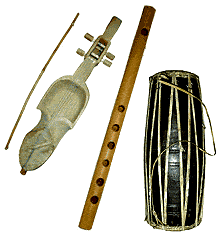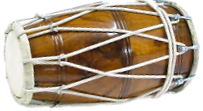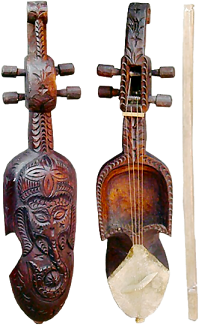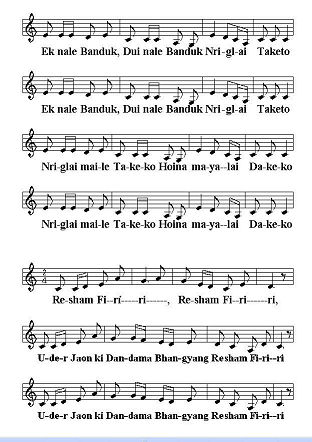

A stream of himalayan air sets a lightweight piece of free flowing colored fabric flying.
Fluttering Silk transforms normally invisible air currents into colorful patterns in fabric.
resham phi-ri-ri ... a nepalese folk song |
Here is a very nice popular 'Nepali Folk Song' that was taught to us by our sherpas and that you will hear and sing along if you go for a Nepal trekking tour. A nice trekking- and bus-riding mantra. Its hard to find anyone in Nepal who don't know/can't sing "Resham Phiriri". Even the children singing this song... nice video.
It seems that EVERYONE in Nepal knows this song, and we ended up singing it ALL the time. Once you listen to the melody, you may be able to understand why it is such a popular song among the young and old.
Download MP3 Song / Download different Tune
Nepalis love to sing folk songs, and this is by far their favorite.
Try to sing along yourself with the lyrics taken from below:
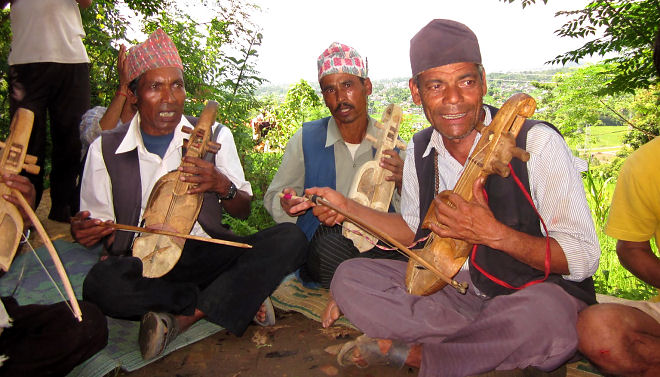
Nepali folk songs are a fascinating blend of rhythm, melody and poetic lyrics. It is the harmony of these three important musical elements that make Nepali folk so irresistible. There is not a trekker who does not leave this country humming Resham phi-ri-ri while being frisked amidst heightened security at the departure gate.
I have often wondered at the popularity of that particular song, and have come to the conclusion that it is the lyrics that make it the hot favourite of the people. The words are imbued with deep symbolism and relevance.
Tibetans have an age-old tradition of printing prayers from
hand-carved wood blocks onto colored squares of cotton.
In Nepal and Tibet, the tradition of hanging flags is very old. In general the flags contained Buddhist prayers to honor the nature and its creator. As Buddhism grew the flags where adapted to contain Buddhist symbols and spiritual mantras, and are hence known as prayer flags. Buddhist monks printed special mantras and symbols on the flags as blessings to be sent out to the world with each breeze of the wind.
These flags are then strung together and hung at mountain passes, over homes and temples, or anywhere the wind will blow their prayers to the universe, for the blessings of the world and to grant the wishes of the person who hung the flags.
They used colors of the five elements: blue for sky or space; white for air or clouds; red for fire; green for water and yellow for earth. They hung the flags over mountain passes and rivers to benefit all who would pass underneath.
Tibetan prayer flags are traditionally used to promote peace, wisdom, compassion, and strength. It is believed the energy of the prayers and sacred mantras on the flags are blown in the wind and will bring Joy, Happiness and good health to all who see them as well as their families, loved ones, neighbors, and all people throughout the world.
It is natural that prayer flags fade and fray, indeed they are intentionally left unhemmed for this to happen. This is symbolic of the inevitable passing of all things. New prayer flags can either be hung over the old ones, or the old ones can be taken down an burnt releasing the last of the blessings.
At the centre of a prayer flag there is an image of the Wind Horse. On the Four corners of each of the prayer flags are images of a Garuda, Dragon, Tiger and Snow Lion which are the four sacred animals representing the four virtues of Wisdom, Strength, Confidence and Joy.
(The most fervent wish of nearly all Tibetans is that every being of any sort, in whatever realms of existence they may reside, should be happy and free from suffering, and that the individual making the wish should have the good fortune to be allowed to assist in the liberation of all beings, without exception.)
It is said that hanging prayer flags is certain to yield greater peace, happiness, and health for oneself, for ones loved ones and neighbors, for strangers in the area, and even for ones enemies.
Due to the compassionate intention of those who create and those who hang the flags, and the movement of the wind itself, the blessings of the prayers are carried throughout all realms, all over the world, pervading the minds of beings with peace and well-being. «more here»
